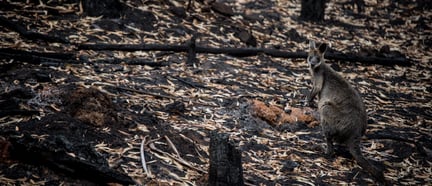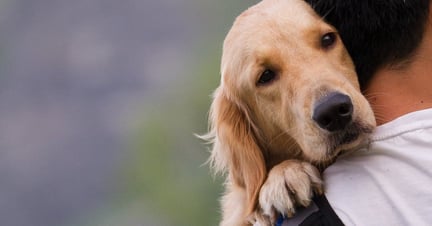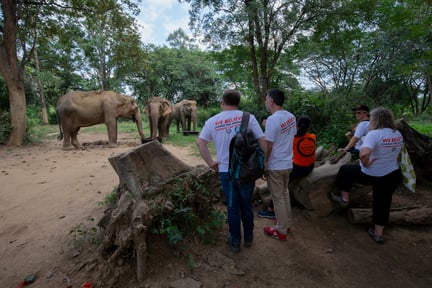
The dos and don’ts of helping injured wildlife in a bushfire
News
The soaring temperatures and damaging fires during Australia’s bushfire season can be extremely challenging for humans and deadly for wildlife. Here are some simple dos and don’ts if you come across injured wildlife during this bushfire season.
Here are a few simple steps you can take if you see injured wildlife after a bushfire, so they have the best chance of survival.
What to do if you find injured wildlife?
Despite your best intentions, handling or disturbing sick, injured or distressed wildlife may cause them further harm.
- DO remove any children, pets and vehicle traffic from the vicinity
- DO take note of the location and the injury
- DO contact a local wildlife vet or wildlife rescue group to report the problem and seek advice
- DO, if so instructed, contain small wildlife that are safe to handle in a pillowcase or wrap them in a towel and place in a secure box for transportation to a vet or wildlife carer
- DO NOT approach the animal. Monitor it from a safe distance
- DO NOT provide food or water unless you are instructed to do so
Remember, it’s against the law to keep native animals taken from the wild and they must be given to a vet or authorised carer operating within a licensed wildlife rescue organisation.
What to do after a bushfire emergency?
It's possible to come across injured wildlife after a bushfire emergency. Here's what you can do to help in case of such a situation.
- DO slow down when driving through areas affected by bushfires as wildlife may move closer towards roads or built-up areas in search of food and shelter
- DO keep an eye out for sick or injured wildlife. If an animal has died, check for orphaned offspring
- DO be mindful when cleaning up after a natural disaster. Dead logs and rocks provide homes and food sources for wildlife
- DO consider planting trees or installing bird nesting boxes where vegetation has been destroyed.
- DO NOT put out food as this can attract predators and put wildlife at greater risk
How to ensure your personal safety during a bushfire?
Remember, wild animals are wild so there’s always a possibility of attack when they're frightened, distressed and injured. Some may even be venomous or carrying disease.
- DO NOT go into active disaster zones
- DO follow any directions given by emergency services personnel
- DO NOT approach snakes, monitor lizards (goannas), bats (flying foxes or microbats), large macropods (kangaroos or wallabies) and raptors (eagles, falcons or hawks)
Thank you for everything you do to protect vulnerable animals here and around the world.
(Header Image: Peter Tremain)
By leaving out a safe, reliable supply of drinking water, you can help keep distressed animals hydrated until the natural environment recovers.
Protecting animals from bushfires
The Australian bushfires in 2019-20 impacted the lives of over three billion animals by either killing, severely injuring, or displacing them.
Plan ahead to protect your pet
Natural emergencies can occur at any time, and without a plan you could make panicked decisions that threaten the safety of your pet, yourself and your family.
Support us
Your support is key to bringing an end to animal suffering across the world.


